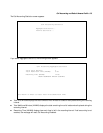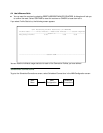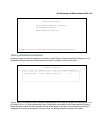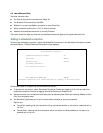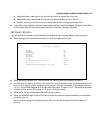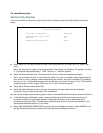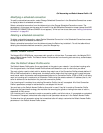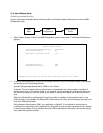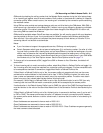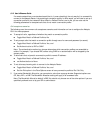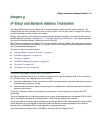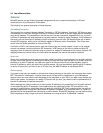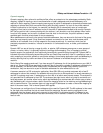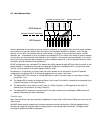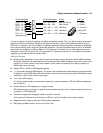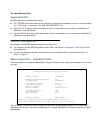Call Accounting and Default Answer Profile 8-11
CNA works by checking the calling number that the Netopia Router receives during the initial setup phase
of an incoming call against a set of stored numbers. Each number in the stored set is defined in a specific
connection profile. When a match occurs, the incoming call is handled by the connection profile containing
the matched number.
Using CNA can also provide cost savings because calls are not billed during the CNA phase. With CNA, a
caller can set up a connection to the Netopia R310 without incurring any charges by accessing a dial-back
connection profile. If the caller’s rates are higher than those charged to the Netopia R310’s return call,
then using CNA has saved the difference.
CNA should be available where CallerID services are available. You will need to consult with your telephone
service provider to find out if your line is provisioned for CallerID compliant with Bellcore specifications.
Also note that if the calling side has instructed the phone company to block delivery of its caller ID, the
answering side will not be able to authenticate.
Notes:
■ If your line does not support the appropriate service, CNA may not work properly.
■ Certain European switch types do not pass a leading zero (0) in a directory number. If a caller is initiat-
ing a call from a number with a leading zero, and you have CNA set to include the leading zero, the con-
nection may fail because the intervening telephone switch dropped the leading zero, and the calling
number mismatches your entry. A workaround would be not to use the leading zero in your CNA Valida-
tion Number entry in the Telco Options screen. See the Telco Options screen on page 7-4.
3. To force a call to be answered at 56K, toggle Force 56K on Answer to Yes. Otherwise, the default will
remain 64K.
4. To force incoming calls to match connection profiles, select Must Match a Defined Profile and toggle it to
Yes. Incoming calls that cannot be matched to a connection profile are dropped. To allow unmatched calls
to be accepted as standard IP connections, toggle Must Match a Defined Profile to No.
If Must Match a Defined Profile is set to Yes, the answer profile only accepts calls that use the same
authentication method defined in the Authentication item. If PAP or CHAP are involved, the caller must
have a name and password or secret that match one of the connection profiles. The caller must obtain
these from you or your network administrator before initiating the call.
For example, if Must Match a Defined Profile is set to Yes, and Authentication is set to PAP, then only
incoming calls that use PAP and match a connection profile will be accepted by the answer profile.
If authentication in the Default Answer Profile is set to CHAP, the value of the CHAP Challenge Name item
must be identical to the value of the Send Host Name item of the Connection Profile to be matched by the
caller.
If Must Match a Defined Profile is set to No, Authentication is assumed to be None, even if you’ve set it
to PAP or CHAP. The answer profile uses the caller’s IP address to match a connection profile. However,
the answer profile cannot discover a caller’s subnet mask; it assumes that the caller is not subnetting its
IP address:
Class A addresses are assumed to have a mask of 255.0.0.0
Class B addresses are assumed to have a mask of 255.255.0.0
Class C addresses are assumed to have a mask of 255.255.255.0. Class C address ranges are generally
the most common subnet allocated.



